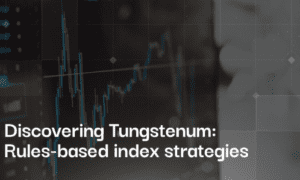Why Understanding Matters
When people feel heard at work, they are more likely to stay, contribute, and grow. But many companies struggle to keep track of how employees feel. The signs can be subtle. Fatigue builds. Motivation dips. Feedback stays quiet. Managers try to check in, but time and structure often get in the way. This is where employee experience management software plays a useful role. It brings structure to listening, reduces the chance of missed signals, and helps people leaders respond with clarity.
What Gets in the Way
Most workplaces run on tight schedules. Meetings, deadlines, and tasks fill the calendar. In that flow, emotional signals fall behind. Someone may have a rough week, but the moment passes before anyone notices. Others may struggle for months without saying much. When feedback relies on long surveys or one-time check-ins, important information gets buried.
Some managers rely on gut feeling. Others assume no news means all is well. Without a simple system for regular input, the picture stays incomplete. And when leaders lack clear insight, they cannot support teams effectively.
Listening With Less Effort
Understanding how people feel does not require long forms or complicated tools. It requires consistency, ease of use, and trust. Short check-ins, done weekly, provide a steady stream of insight. When people can share how they feel in under a minute, they are more likely to participate.
The key is simplicity. One or two well-structured questions, paired with the option to add a few words of context, provide enough data to see what is changing. It also keeps the process lightweight. People answer quickly. Managers read quickly. That rhythm builds a healthy habit of reflection.
Finding Patterns Across Time
A single answer does not always say much. But when answers appear week after week, patterns begin to show. Maybe someone feels stressed for two or three weeks in a row. Maybe the mood across a team dips after a new process begins. These patterns matter more than isolated feedback.
Tools that track and display these trends help managers spot issues early. Instead of reacting to complaints, they respond to signals before they become problems. This reduces pressure and supports more balanced workloads, stronger relationships, and better team outcomes.
Making Room for Honesty
People will not share openly if they do not feel safe. This applies to feedback at every level. If employees worry that their answers will be judged or ignored, they stay quiet. A clear process for giving feedback, combined with thoughtful responses from leadership, builds trust over time.
A simple tool that allows private responses and creates distance between the comment and the person reading it can help. It shifts the focus from who said it to what the message is. That shift allows space for truth. When people see that their feedback shapes real decisions, they feel encouraged to keep sharing.
Supporting Every Manager
Not every manager knows how to read signals well. Some excel at task management but struggle with emotional cues. Others care deeply but lack the time or structure to follow up consistently. A tool that summarizes team feedback helps close that gap.
With regular insight, even less experienced leaders can spot trends. They can check in one-on-one when energy drops. They can share wins when the team feels proud. They can improve communication when clarity starts to slip. Structured feedback helps build stronger leadership across the board.
Giving Employees a Clear Voice
In many workplaces, employees wait for performance reviews to speak. By then, the moment has passed. Others may have no place to share ideas or frustrations at all. Regular check-ins shift that pattern. They give people a chance to share a little at a time. Over weeks and months, those moments add up.
Some people may use the check-in to flag a small problem. Others may use it to share appreciation. Either way, the act of being asked each week sends a message. It says the company wants to know how they feel, even when things seem quiet on the surface.
Helping HR See the Full Picture
HR teams often carry the responsibility for employee well-being, but without real-time data, their view stays limited. Pulse surveys, turnover rates, and exit interviews provide useful information, but they come late. A weekly check-in tool helps HR stay connected to the present.
With access to trend data, HR can see where support is needed. They can notice when one department begins to struggle or when a new policy affects morale. They can bring insight to leadership conversations and help drive timely decisions.
Building a Culture of Awareness
Understanding how people feel at work is not a one-time project. It becomes part of the company’s rhythm. When feedback flows easily, people get used to reflecting. When leaders respond, teams feel seen. When HR tracks patterns, the organization adapts with more care.
This kind of listening culture supports retention, trust, and performance. It lowers the cost of misunderstanding and raises the quality of everyday work. A simple tool, used with care, becomes part of how people work together more effectively.





























